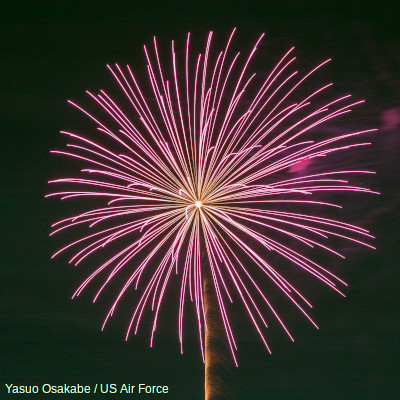
# **The Captivating Chemistry of Fireworks**
Fireworks represent a stunning and cherished custom that enchants millions around the globe. Their lively hues and thunderous detonations consistently leave a lasting impression. Yet, this excitement isn’t universally shared—cats, for instance, generally detest them with an unwavering intensity. Beyond the breathtaking display, fireworks highlight a remarkable aspect of chemistry, illustrating the tremendous energy of oxidation reactions and the principles of quantum mechanics in action.
## **The Fundamentals of Combustion**
At the core of every firework lies a chemical reaction driven by oxidation. These oxidation reactions transpire when oxygen interacts with other elements, often granting energy in the forms of light and heat. In the context of fireworks, this reaction is meticulously managed to produce explosions that are both potent and visually captivating.
Numerous compounds utilized in fireworks harbor oxygen-rich molecules that tend to break down when subjected to heat. These oxidizers, such as potassium perchlorate (KClO₄) and potassium nitrate (KNO₃), supply the essential oxygen needed to ignite and sustain the explosive processes.
## **Fireworks and Electron Affinity**
To comprehend the impressive power of fireworks, it’s beneficial to consider chemistry from the perspective of electron affinity. Certain elements, particularly those located on the upper right side of the periodic table (oxygen, chlorine, fluorine), exhibit an extreme reluctance to share electrons. When these elements are compelled to form unstable compounds with one another, the result is a molecule actively searching for stability, often resulting in a violent reaction.
For example, chlorine trifluoride (ClF₃) is an extraordinarily reactive molecule that can detonate upon contact with a wide range of substances, including water, concrete, and even asbestos. Nazi scientists looked into ClF₃ as a possible weapon but ultimately deemed it too hazardous to manage. Although ClF₃ isn’t used in fireworks, it exemplifies the principle that unstable molecules—particularly those with oxygen, chlorine, or fluorine—tend to react explosively under suitable conditions.
## **Oxygen and Peroxides in Combustion**
Oxygen is vital to firework explosions. While molecular oxygen (O₂) remains stable at ambient temperature, it can turn highly reactive when heated. One commonly used chemical in fireworks is hydrogen peroxide (H₂O₂), a straightforward yet potentially dangerous compound. The 3% solution commonly found in medicine cabinets is safe, but higher concentrations (30–70%) are significantly less stable and can result in explosive reactions.
Peroxides, which are characterized by oxygen-oxygen single bonds, exhibit much less stability compared to molecular oxygen due to the ease with which their bonds can be broken. This instability is a contributing factor to the quick, exothermic reactions that propel firework explosions.
## **Oxidizers: Nitrates, Chlorates, and Perchlorates**
In the realm of fireworks, nitrate (NO₃⁻), chlorate (ClO₃⁻), and perchlorate (ClO₄⁻) salts function as key oxidizing agents. Each of these compounds delivers oxygen to propel the combustion reaction.
– **Nitrates (NO₃⁻):** Typically more stable than chlorates or perchlorates, nitrates require a strong external trigger—such as a spark or fuse—to commence combustion. Gunpowder, for example, consists of potassium nitrate (KNO₃), sulfur, and carbon.
– **Chlorates (ClO₃⁻):** Much more reactive and less stable compared to nitrates, chlorates can explode dangerously with minimal provocation. Historically, some early fireworks employed potassium chlorate (KClO₃), but its unpredictability led to a transition toward safer options.
– **Perchlorates (ClO₄⁻):** Even with a higher oxygen content than chlorates, perchlorates are more stable and therefore favored in contemporary fireworks.
These oxidizers associate with fuel sources like charcoal, sulfur, or powdered metals (such as aluminum and magnesium) to generate explosive combustion.
## **Color Chemistry: A Display of Quantum Mechanics**
The stunning colors present in fireworks result from metal salts that emit light at distinctive wavelengths. When a firework detonates, the emitted energy excites the electrons in these metal ions to elevated energy levels. As these electrons revert to their ground state, they emit energy in the form of visible light.
Here’s how typical metal salts contribute to the hues of fireworks:
– **Sodium (Na⁺) – Yellow:** Sodium salts, like sodium nitrate (NaNO₃), produce a bright yellow flame.
– **Strontium (Sr²⁺) – Red:** Strontium chloride (SrCl₂) generates rich red shades.
– **Barium (Ba²⁺) – Green:** Barium salts, such as barium chloride (BaCl₂), provide fireworks with their green tint.
– **Copper (Cu²⁺) – Blue**